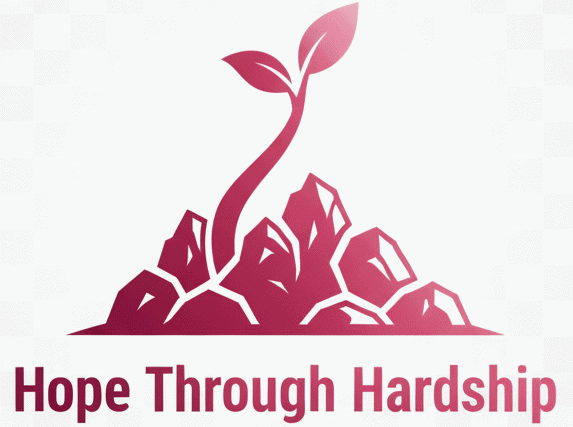Understanding Your Body’s Unique Recovery Journey After 40
Postpartum fitness after 40 requires a different approach than recovering in your twenties or thirties. Your body has worked incredibly hard during pregnancy and childbirth, and now it needs gentle rehabilitation, hormonal balance, and muscle reconstruction. The recovery process naturally takes longer when you’re over 40, but this doesn’t mean you can’t achieve amazing results with the right strategy.
Women over 40 face unique challenges, including slower metabolism, joint stiffness, and energy fluctuations during postpartum recovery. Your connective tissues remain softer for months due to the relaxin hormone, which stayed elevated longer than in younger mothers. This extended hormone presence provides an opportunity for deeper core work and flexibility improvements when approached correctly.
Why Age Matters in Postpartum Recovery
Recovery after 40 involves cellular regeneration, bone density concerns, and cardiovascular adaptations that differ significantly from younger years. Your body’s natural collagen production has decreased, making tissue repair slower but more thorough when given proper support. Think of this like renovating a vintage home – it takes more time and care, but the results can be exceptionally strong and beautiful.

The good news about postpartum fitness after 40 lies in your accumulated wisdom and body awareness. You understand your limits better, listen to warning signals more effectively, and typically approach exercise with realistic expectations, consistent habits, and long-term thinking. This maturity becomes your greatest asset in creating a sustainable fitness journey.
Essential Safety Guidelines for New Mothers Over 40
Medical Clearance and Professional Assessment
Always obtain medical clearance before beginning any fitness routine, especially for postpartum fitness after 40. Your healthcare provider needs to assess cesarean healing, diastasis recti, and pelvic floor function.
Recognizing Warning Signs During Exercise
Stop immediately if you experience heavy bleeding, severe pain, or dizziness during workouts. These symptoms require immediate medical attention and exercise modification.
Hormone Considerations and Sleep Impact
Breastfeeding hormones, sleep deprivation, and stress levels significantly impact your exercise capacity and recovery time after 40. Adjust intensity based on daily energy levels.
Building Your Foundation: Core Recovery and Pelvic Floor Strength
Your core muscles have been stretched and weakened during pregnancy, requiring systematic rebuilding, breath coordination, and functional movement patterns. Traditional crunches worsen diastasis recti, so focus on exercises that encourage proper muscle firing and coordination. Start with simple breathing exercises that engage your deep abdominal muscles while lying on your back with your knees bent.
Postpartum fitness after 40 begins with reconnecting your brain to your core muscles through diaphragmatic breathing, pelvic floor activation, and transverse abdominis engagement. Practice the “360-degree breath” where you breathe into your ribcage, expanding it like an accordion. This technique helps coordinate all your core muscles while reducing tension in your neck and shoulders from breastfeeding positions.
Week 1-2: Gentle Activation Exercises
Begin with breath work, gentle stretches, and basic core connection exercises lasting 10-15 minutes daily. Focus on quality over quantity.
Week 3-4: Progressive Core Strengthening
Add wall sits, modified planks, and glute bridges to your routine. These exercises rebuild foundational strength without overwhelming your healing body.
Week 5-8: Functional Movement Integration
Incorporate squats, lunges, and carrying exercises that mimic daily activities like lifting your baby and household tasks.
Cardiovascular Training That Respects Your Recovery
Walking remains the gold standard for early postpartum fitness after 40 because it’s joint-friendly, mood-boosting, and energy-sustainable. Start with 10-minute gentle walks and gradually increase duration rather than intensity. Your heart rate response changes significantly after pregnancy, so don’t rely on pre-pregnancy heart rate zones for the first few months.
Swimming and water aerobics provide excellent cardiovascular benefits with buoyancy support, reduced joint stress, and full-body engagement once you’re cleared for water activities. The hydrostatic pressure helps reduce swelling and supports your healing tissues. Many community centers offer postnatal swim classes, water walking sessions, and aqua therapy programs specifically designed for new mothers.
Low-Impact Cardio Options
Elliptical training, stationary cycling, and rowing machines offer cardiovascular benefits while protecting your joints and pelvic floor during early recovery phases.
High-Impact Activity Timeline
Wait at least 12-16 weeks before attempting running, jumping, or high-intensity intervals. Your body needs adequate time for tissue healing and core strength development.
Strength Training Strategies for Women Over 40
Resistance training becomes crucial for postpartum fitness after 40 because it combats age-related muscle loss, bone density decline, and metabolic slowdown. Start with bodyweight exercises and resistance bands before progressing to free weights. Your strength will return gradually, so patience and consistency matter more than lifting heavy weights initially.
Focus on compound movements that work multiple muscle groups simultaneously, like squats with overhead press, lunges with rotation, and deadlifts with rows. These exercises improve functional strength, coordination, and time efficiency – all essential when juggling motherhood responsibilities. Aim for 2-3 strength sessions per week, allowing at least one day of rest between sessions.
Upper Body Strength for Daily Functions
Strengthen your shoulders, back, and arms to handle increased carrying, lifting, and feeding positions without developing pain or tension patterns.
Lower Body Power and Stability
Build glute strength, quad power, and ankle stability to support your changing posture and increased daily movement demands with your growing child.
Flexibility and Mobility: Addressing Postpartum Posture
Postpartum fitness after 40 must address the rounded shoulders, forward head posture, and tight hip flexors that develop from pregnancy and early motherhood activities. Spend extra time on thoracic spine mobility and chest stretches to counteract feeding positions and baby-wearing postures. These postural changes can lead to chronic pain if not addressed early in your recovery.
Your flexibility may improve during the first six months postpartum due to residual relaxin hormone, but this also means you’re more susceptible to overstretching injuries, joint instability, and ligament strain. Gentle, sustained stretches work better than aggressive flexibility work. Focus on areas that feel tight rather than trying to achieve extreme ranges of motion.
Morning Mobility Routine
Start each day with gentle spinal movements, neck rolls, and hip circles to counteract overnight stiffness and prepare your body for daily activities.
Evening Restoration Practice
End your day with supported stretches, foam rolling, and meditation to help your body recover and improve sleep quality.
Nutrition Support for Postpartum Fitness After 40
Your nutritional needs during postpartum fitness after 40 include adequate protein intake, calcium absorption, and iron replenishment to support both exercise recovery and breastfeeding demands. Don’t drastically cut calories while trying to lose pregnancy weight – your body needs fuel for healing, hormone regulation, and energy production. Focus on nutrient-dense foods rather than restriction.
Hydration becomes even more critical when combining exercise with breastfeeding after 40. Your fluid needs increase significantly, and dehydration can impact milk production, exercise performance, and recovery speed. Keep water bottles in multiple locations and drink to thirst rather than forcing excessive amounts that can dilute important electrolytes.
Pre and Post-Workout Nutrition
Eat a small snack containing carbs and protein 30-60 minutes before exercise, and refuel within 2 hours afterward to optimize recovery and energy levels.
Supplementation Considerations
Discuss vitamin D, omega-3 fatty acids, and magnesium supplements with your healthcare provider to support bone health, inflammation control, and muscle function.
Managing Energy and Sleep Challenges
Sleep deprivation significantly impacts postpartum fitness after 40 by affecting hormone balance, recovery capacity, and motivation levels. Your cortisol patterns have shifted, making morning workouts potentially more effective than evening sessions. Listen to your body’s natural energy rhythms rather than forcing workouts when you’re exhausted.
Short, frequent exercise sessions often work better than long workouts when you’re managing interrupted sleep patterns. Fifteen-minute movement sessions, stair climbing breaks, and playground workouts while your child plays can add up to significant fitness benefits. Quality trumps quantity during this phase of life, so make every minute of movement count.
Power Nap Integration
Strategic 20-minute naps can significantly improve your energy for afternoon or evening workouts without disrupting nighttime sleep patterns.
Stress Management Through Movement
Use exercise as stress relief rather than another item on your to-do list. Gentle movement often provides more benefit than intense workouts during high-stress periods.
Creating Your Personalized Workout Schedule
Postpartum fitness after 40 requires flexible scheduling, realistic expectations, and backup plans for days when life doesn’t go as planned. Start with three 20-30 minute sessions per week and adjust based on your energy, baby’s needs, and other life demands. Some weeks you’ll manage five workouts, other weeks you might only squeeze in two – both scenarios are perfectly acceptable.
Build your exercise routine around your most consistent time of day, whether that’s early morning before the family wakes up, during nap times, or in the evening with your partner’s support. Home workout options, stroller fitness classes, and gym childcare programs all provide different solutions for different life circumstances and preferences.
Sample Weekly Schedule Options
Option A: Monday/Wednesday/Friday 30-minute home workouts, Saturday family active time
Option B: Tuesday/Thursday gym sessions, weekend outdoor adventures
Option C: Daily 15-minute morning movement, longer Wednesday evening class
Adapting to Life Changes
Modify your routine as your child grows and your schedule evolves. Flexibility and self-compassion matter more than perfect adherence to any specific program.
Tracking Progress Beyond the Scale
Success in postpartum fitness after 40 extends far beyond weight loss to include improved energy, better mood, increased strength, and enhanced confidence in your body’s capabilities. Track metrics like how many flights of stairs you can climb without breathlessness, how your back feels after carrying your child, or how well you sleep after active days.

Take progress photos, measurements, and strength benchmarks monthly rather than daily weigh-ins that can fluctuate significantly due to hormonal changes, water retention, and breastfeeding demands. Functional improvements, pain reduction, and mood enhancement often appear weeks before visible physical changes, so celebrate these victories enthusiastically.
Non-Scale Victory Examples
Better posture during feeding sessions, carrying groceries without back pain, keeping up with older children at playgrounds, and feeling confident in your clothes again.
Long-term Health Markers
Focus on resting heart rate improvements, blood pressure stability, cholesterol levels, and bone density maintenance as measures of your fitness success.
Building Your Support Network
Postpartum fitness after 40 becomes more enjoyable and sustainable with community support, workout partners, and professional guidance tailored to your unique needs. Join mom fitness groups, online communities, or find a workout buddy who understands the challenges of balancing motherhood with personal health goals. Having accountability and encouragement makes difficult days more manageable.
Consider investing in personal training sessions, physiotherapy consultations, or postnatal fitness classes to ensure proper form and program progression. Professional guidance helps you avoid common mistakes, addresses individual concerns, and motivates challenging phases. Your investment in expert support pays dividends in faster progress and injury prevention.
Finding Your Tribe
Connect with other mothers through fitness classes, walking groups, online forums, and neighborhood networks to share experiences and maintain motivation.
Professional Support Team
Build relationships with a personal trainer, physiotherapist, registered dietitian, and mental health counselor who understand postpartum fitness needs after 40.
Recovery and fitness after 40 requires patience, wisdom, and self-compassion. Your body has accomplished something incredible, and now it deserves the same care and attention you give to your precious new baby. Start slowly, progress gradually, and trust the process of rebuilding your strength and vitality in this new chapter of life.

